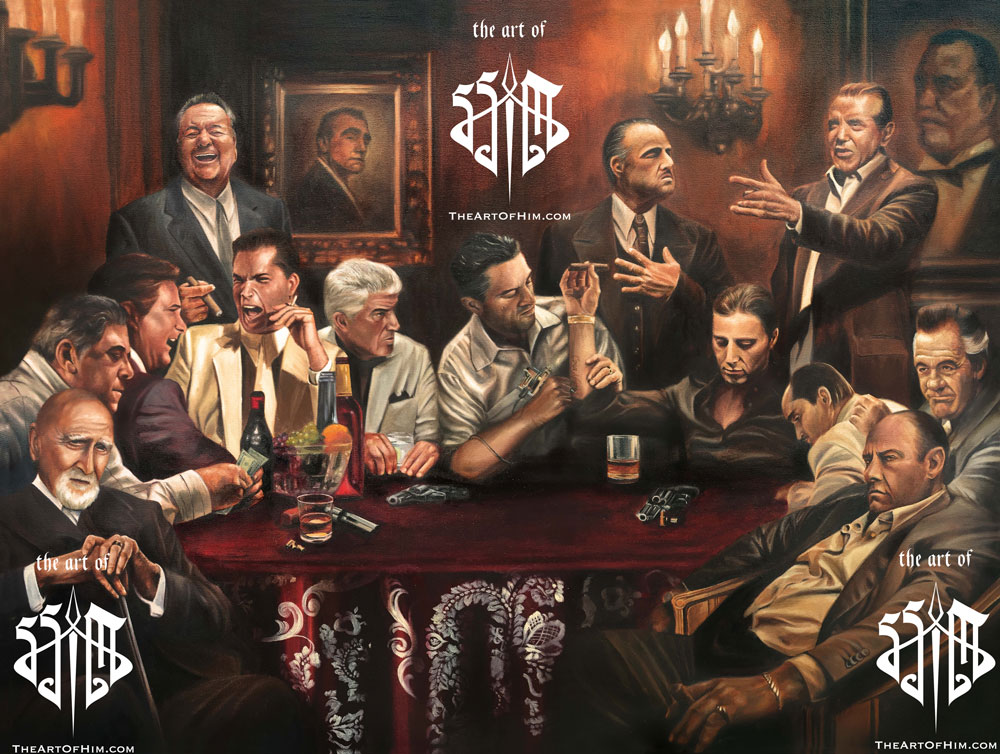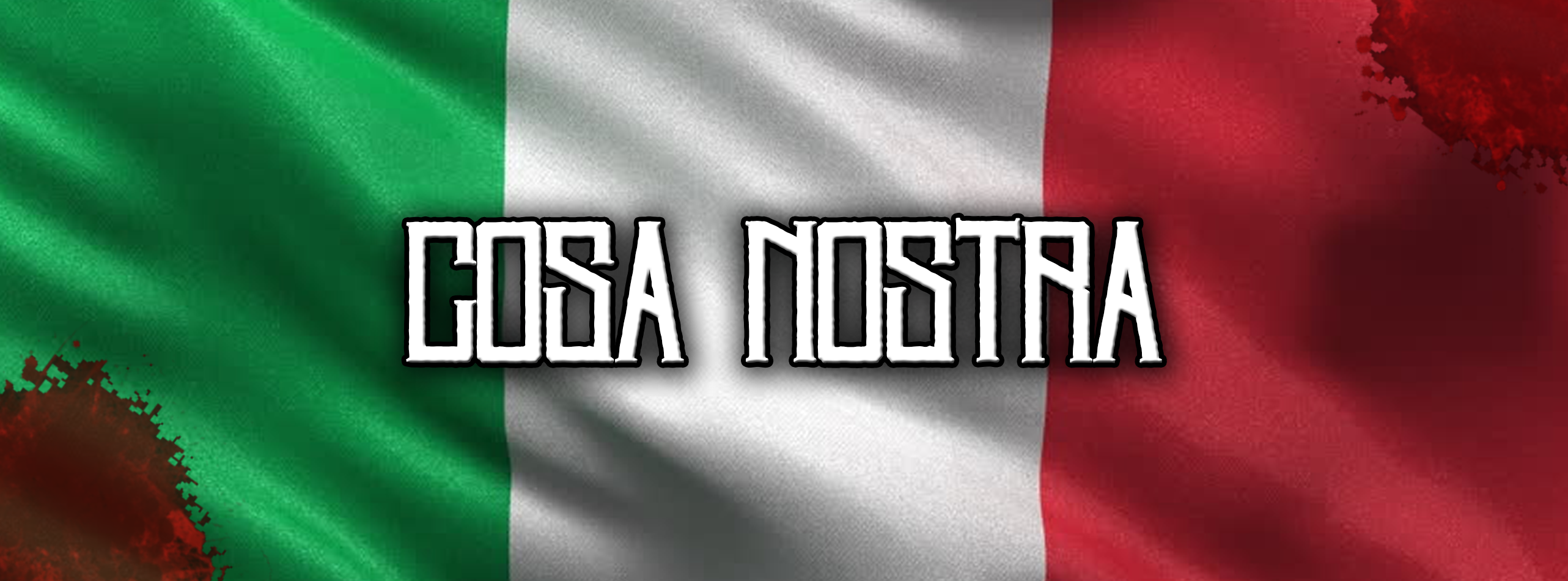
The Enduring Shadow: La Cosa Nostra’s Rise, Reign, and Retreat
Few criminal enterprises have captivated the global imagination quite like La Cosa Nostra. More than just a collection of illicit activities, it built a parallel society, a shadow government operating by its own stringent codes of conduct, loyalty, and violence. From its clandestine origins in the sun-baked villages of Sicily to its peak as a formidable, nationwide force in America, the Mafia, or Cosa Nostra as its members knew it, carved an indelible mark on history, culture, and the very fabric of American society. Its story is one of ruthless ambition, strategic adaptation, and an eventual, slow decline under the relentless pressure of law enforcement and changing times.
The roots of La Cosa Nostra are deeply embedded in the social and economic conditions of 19th-century Sicily. In a land marked by absentee landlords, a weak central government, and widespread poverty, informal power structures emerged to fill the vacuum. "Mafia," a term whose etymology is still debated but often associated with arrogance and boldness, came to describe groups of "men of honor" who offered protection, mediated disputes, and enforced their own brand of justice – often violently – in exchange for respect and tribute. This system, built on a fierce code of silence known as omertà, was a response to a state that could not or would not protect its citizens.
The great wave of Italian immigration to the United States in the late 19th and early 20th centuries brought this clandestine tradition across the Atlantic. Sicilian immigrants, often poor, uneducated, and facing intense prejudice, found themselves in unfamiliar and hostile urban environments. The fledgling American Mafia initially functioned as a crude form of social welfare and protection, preying on its own community while simultaneously offering a semblance of order and security that established institutions denied. Early "Black Hand" extortion rackets terrorized Italian enclaves, but these were largely fragmented and unsophisticated compared to the organized crime machine that would soon emerge.

The true catalyst for the Mafia’s expansion and consolidation in America was Prohibition. The 18th Amendment, enacted in 1920, inadvertently created a golden age of illicit opportunity. The demand for alcohol was insatiable, and criminal gangs, including the burgeoning Italian-American outfits, were perfectly positioned to supply it. Suddenly, vast fortunes could be made overnight. Figures like Al Capone in Chicago became household names, their exploits a mix of brutal violence and flamboyant public displays. Capone, a master of public relations as much as racketeering, once famously quipped, "They call me a racketeer. I call myself a businessman. I make my money by supplying a public demand." This era saw the transition from disparate ethnic gangs to highly organized, multi-ethnic criminal syndicates.
The brutal "Castellammarese War" of 1930-31, a bloody struggle for supremacy between old-guard Sicilian bosses Giuseppe "Joe the Boss" Masseria and Salvatore Maranzano, marked a turning point. Its resolution, orchestrated by the cunning and visionary Charles "Lucky" Luciano, ushered in a new era. Luciano, seeing the self-destructive nature of endless internecine warfare, arranged for the assassinations of both Masseria and Maranzano. He then abolished the archaic "Boss of Bosses" title and established The Commission – a governing body comprised of the leaders of the most powerful Mafia families. This innovation brought unprecedented stability, divided territories, and settled disputes, transforming the American Mafia into a truly national criminal enterprise with a clear hierarchy and a shared purpose: profit.
Under The Commission’s stewardship, La Cosa Nostra entered its "Golden Age." Its tentacles reached into every facet of urban life. Gambling, loan-sharking, labor racketeering, construction, waste management, and eventually drug trafficking became its primary sources of income. By infiltrating legitimate businesses and corrupting unions, the Mafia exerted immense influence, often operating with impunity. Its power was so pervasive that even J. Edgar Hoover, the long-serving director of the FBI, famously denied the very existence of a national crime syndicate for decades, dismissing it as a figment of imagination or "myth."
However, the myth began to unravel. The Kefauver Hearings in the early 1950s, a Senate committee investigating organized crime, provided the American public with its first televised glimpse into the shadowy world of the Mafia. While many witnesses invoked the Fifth Amendment, the sheer number of figures and the testimony of a few brave individuals began to chip away at Hoover’s denial. Then came the Apalachin meeting in 1957, a gathering of top Mafia bosses in rural New York, dramatically raided by state police. This event was a stark revelation, undeniably proving the existence of a coordinated national criminal network. "Apalachin proved to the nation that there was a Mafia and that it was a serious national problem," wrote mob historian Carl Sifakis.
The most significant blow to La Cosa Nostra came with the passage of the Racketeer Influenced and Corrupt Organizations (RICO) Act in 1970. Before RICO, prosecutors struggled to dismantle entire criminal enterprises, often only able to charge individuals for specific crimes. RICO changed the game, allowing the government to target the entire "enterprise" if a pattern of criminal activity could be proven. This meant that bosses could be held accountable for crimes committed by their subordinates, fundamentally altering the power dynamics within the Mafia.
RICO, combined with a growing willingness of "made men" to break omertà and cooperate with authorities, began the slow, painful process of dismantling the Mafia’s power structure. Joe Valachi, a low-ranking soldier, was the first significant government informant in the early 1960s, testifying before Congress and revealing the inner workings and structure of "Cosa Nostra." Decades later, high-profile turncoats like Sammy "The Bull" Gravano, John Gotti’s underboss, provided devastating testimony that led to the conviction of the flamboyant "Teflon Don" himself in 1992. Gravano’s decision to flip, betraying his boss, was a seismic event, shattering the long-held belief in unwavering loyalty and signaling a profound shift in the Mafia’s internal dynamics.
Today, La Cosa Nostra is a shadow of its former self. Its once iron grip on industries and communities has largely been broken. Relentless law enforcement, the erosion of internal codes, the allure of easier money in the fragmented drug trade, and changing social landscapes have all contributed to its decline. The massive, hierarchical structures that once controlled entire cities have largely dissolved into smaller, more localized crews. While families like the Gambinos, Genoveses, and Luccheses still exist, their power and influence are severely diminished. They continue to engage in traditional rackets like extortion, illegal gambling, loan sharking, and union racketeering, but often on a much smaller scale and with greater risk.
Yet, the myth endures. Films like "The Godfather" and TV series like "The Sopranos" have etched La Cosa Nostra into the global consciousness, often romanticizing its figures and codes. These cultural touchstones, while compelling, often blur the lines between reality and fiction, perpetuating an image of power and honor that clashes sharply with the brutal realities of organized crime. The fascination speaks to a primal human interest in forbidden societies, in the dark side of ambition, and in the enduring power of family and loyalty, even when perverted for criminal ends.

In conclusion, La Cosa Nostra’s journey from a desperate response to state failure in Sicily to a powerful, national criminal enterprise in America is a complex saga of adaptation, violence, and cunning. For decades, it thrived by exploiting societal weaknesses and operating beyond the reach of the law, building a clandestine empire that commanded fear and respect. However, its ultimate undoing came from a combination of its own internal flaws – particularly the breakdown of omertà – and the relentless, strategic application of legal tools like the RICO Act. While it may never fully disappear, its golden age is unequivocally over. The whispers of its power still echo, but the roaring lion of La Cosa Nostra has been reduced to a wary, often desperate, shadow, a persistent reminder of a once-dominant force now largely relegated to the annals of history and the enduring realm of cultural myth.


